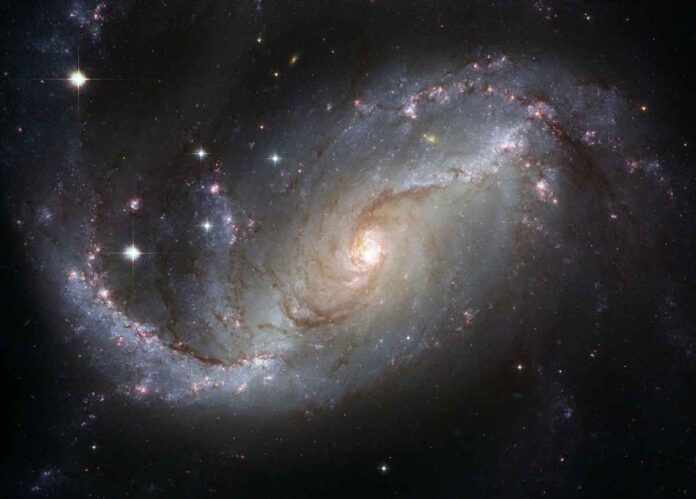Scientists wanted to nearby stars affect the planet-forming discs. This is why a global team of researchers has observed three known interacting twin-disk systems. They have used a near-infrared polarised light.
The study was published in Monthly Notices of the Royal Astronomical Society. The researchers used photo imagery from the European Southern Observatory’s Very Large Telescope (VLT) for the study. They wanted to gain a new perspective on the spirals that can form when the dust in discs from dual-star systems interact.
Prior research has suggested that star formation begins when gravity forces clouds of dust and gas to collapse into a central entity. As the stars form, they are encircled by a halo of matter. It can lead to the creation of planets. Such halos are known as discs.
Prior research has also suggested that if two stars emerge from the same cloud of gas and dust, their discs can interact with one another. Spiral formations can also appear on occasion. In this new effort, the researchers studied images of three such spiral formations in three parts of the Milky Way.
They analyzed images from the VLT. These images captured polarised light from the three-star systems. By analyzing the polarised light from each of the star systems, the researchers were able to create images of the three systems showing their spirals.
The researchers note that their work is part of a larger effort to understand how planets form in systems where spirals emerge as a result of interactions with partner stars.
They also note that such interactions are far from uniform. Because some stars orbit each other and others are nothing more than flybys. Each is anticipated to have a different effect on the planetary discs that eventually give rise to planets.
This work is the beginning of how space scientists view the impact of flybys. The study suggested that they may play a larger role in planet formation than has been thought.
More information: Philipp Weber et al, The SPHERE view of three interacting twin disc systems in polarised light, Monthly Notices of the Royal Astronomical Society (2022). DOI: 10.1093/mnras/stac3478

